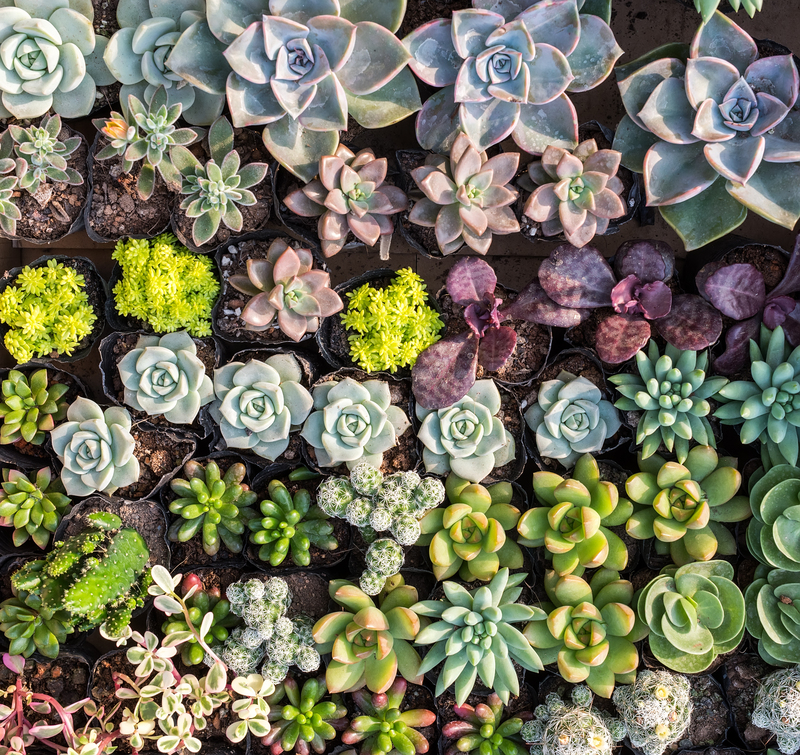Embrace Warmth: Protecting Plants in the Winter Frost
Posted on 23/08/2025
Embrace Warmth: Protecting Plants in the Winter Frost
As chilly winds begin to sweep through gardens and landscapes, plant lovers face the same old dilemma: how to protect plants from winter frost? Frost not only damages the delicate foliage but can also wipe out months of hard gardening work. If you want to learn more about ways to shield your beloved plants from winter's icy grasp, read on. In this comprehensive, SEO-optimized guide, we'll explore expert tips, methods, and strategies to help you embrace warmth and ensure your garden thrives through the coldest months.
Why Is Protecting Plants from Winter Frost Crucial?
Winter frost can cause serious harm to plants, especially those not adapted to colder climates. Minuscule ice crystals form inside the plant cells, puncturing the cell walls and leading to irreparable damage. Recognizing why plant protection is essential helps gardeners make informed decisions to shield their green companions when winter arrives.
- Frost can lead to burnt foliage and blackened leaves.
- Prolonged exposure can kill roots and cause entire plants to perish.
- Fruit and vegetable yield may be significantly reduced.
- Ornamental plants lose their aesthetic appeal.
Embracing warmth through prevention and protection is the key to keeping your garden healthy during winter.

Understanding Winter Frost and Its Effects on Plants
Winter frost occurs when the temperature of plant tissue drops below the freezing point of water, causing ice to form. This process typically happens during clear, calm nights when radiant heat escapes from the ground, making plants particularly susceptible to freezing. Both tender annuals and even some hardy perennials may struggle to cope.
Different Types of Frost
- Radiation Frost: The most common type, occurring on still, cloudless nights when heat radiates away from surfaces.
- Advection Frost: Occurs when cold wind moves into an area, quickly dropping temperatures and affecting wide areas.
- Hoar Frost: Forms when water vapor directly deposits onto surfaces as ice, creating a white, feathery covering.
Knowing the type of frost you're dealing with can help you choose the best frost protection measures.
Identifying Plants at Risk During Winter Frost
Not all plants are equally affected by frost. It's crucial to identify which ones in your garden are at greater risk. Generally, tropical and subtropical species, new transplants, and delicate annuals, such as tomatoes and impatiens, are the most vulnerable.
Common Vulnerable Plants
- Tender perennials (e.g., dahlias, fuchsias, cannas)
- Tropical plants (palms, bird of paradise, citrus)
- Young shrubs and trees that haven't established deep roots
- Early-sprouting bulbs
- Succulents that retain water in their tissues
Recognizing sensitive species allows for tailored protective strategies.
Proven Techniques for Frost Protection
The good news is, there are several effective ways to protect garden plants during winter. Below are a set of field-tested, gardener-endorsed practices for embracing warmth and insulating your plants from severe cold.
1. Mulching: Nature's Blanket
Mulch acts as a natural insulator that protects plant roots from temperature fluctuations. Use organic materials such as straw, wood chips, pine needles, compost, or shredded leaves. Spread a 2 to 4-inch layer around the base of plants, particularly perennials and bulbs. Mulching is especially useful for vegetable gardens and flower beds.
- Retains soil warmth
- Reduces moisture loss
- Prevents soil erosion
2. Covering with Cloths and Frost Blankets
One of the oldest tricks in the book, covering plants on frosty nights, can make a critical difference. Frost blankets, burlap, old sheets, and even cardboard boxes work well. Be sure to remove covers in the morning to prevent overheating.
- Use breathable fabrics to avoid moisture condensation
- Install stakes to form a tipi and prevent fabric from touching leaves
- Secure covers with rocks or clothespins to keep them in place
Pro Tip: Avoid plastic as it can trap moisture and freeze the plant.
3. Watering Plants Ahead of Frost
Well-watered soil retains heat better than dry soil. On the day before an expected freeze, deeply water your garden. Moist soil can protect the root zone by up to 5?F compared to dry ground.
- Water early in the day to allow time for absorption
- Avoid waterlogged soil to prevent root rot
Keeping soil hydrated helps embrace warmth for a longer duration.
4. Use of Cold Frames and Cloches
Cold frames are mini-greenhouses that trap solar heat during the day and release it at night, creating a microclimate that shields plants from frost. Gardeners can make DIY cold frames using old windows and wooden boxes or purchase ready-made options.
- Perfect for vegetable seedlings and early greens
- Open during sunny days to prevent overheating
Cloches are individual plant covers made from glass or plastic. Inverted jars, bottles, or even milk jugs with the bottoms cut off also work as cloches.
- Easy to move and adjust
- Protect delicate blooms and herbs
5. Building Windbreaks
Wind can amplify frost damage by stripping away protective heat from plants. Temporary or permanent windbreaks in the form of fences, burlap screens, or shrub hedges can reduce wind chill, helping to protect your garden from the harsh winter breeze.
- Install stakes and stretch burlap or canvas in the direction of prevailing winds
- Use dense evergreen shrubs as permanent barriers
6. Bringing Potted Plants Indoors
Container plants, which are more exposed to fluctuating temperatures, should be brought indoors or into a garage, greenhouse, or sheltered porch at the first sign of frost.
- Acclimate plants gradually to indoor conditions
- Keep away from heat vents and drafts
- Monitor for pests before bringing inside
7. Applying Anti-Desiccant Sprays
Anti-desiccant sprays, also known as anti-transpirants, form a thin protective coating over leaves that can help reduce moisture loss during dry, cold spells. They are particularly beneficial for broadleaf evergreens and newly planted trees.
- Apply according to label directions
- Best used on days above freezing
Proactive Winter Care: Timing Matters
Part of embracing warmth is acting before a freeze is forecast. Pay attention to your local weather, and regularly check for frost warnings.
- Install temporary covers or move pots in the evening before temperatures drop
- Mulch before the ground freezes solid
- Prune dead wood in late winter or early spring, not autumn, to prevent stimulating new growth
Consistency is key! React quickly to cold snaps for best results.
How to Recover Plants After Frost Damage
Sometimes, despite your best efforts, frost may still cause damage. Recovery is possible if you take immediate and proper action.
Steps for Plant Recovery
- Wait until after all danger of frost has passed before pruning frost-damaged growth. Pruning too early exposes live tissue to more damage.
- Provide gentle, consistent watering to relieve stress on the roots.
- Apply a balanced fertilizer to support regrowth when the weather warms.
- If the ground is waterlogged, improve drainage to prevent root rot.
- Be patient! Some plants may recover slowly but will bounce back in spring.
Smart Plant Selection: Growing Frost-Tolerant Plants
The easiest way to reduce winter stress is to choose plants adapted to your hardiness zone. Native plants and those with inherent cold tolerance are naturally equipped to handle seasonal temperature changes.
- Consult the USDA plant hardiness map or your local extension agent
- Mix in "frost-immune" varieties such as hellebores, pansies, and ornamental cabbages
- Plant tender species in containers for easy relocation during winter
Strategic planting is an excellent method for low-maintenance winter gardening.
Modern Solutions: Technology for Winter Plant Protection
For high-value crops or in extreme climates, advanced technology offers even more ways to embrace warmth and shield plants from frost.
Frost Protection Heaters
- Electric or propane heaters in greenhouses can keep the temperature safely above freezing.
- Heat lamps and soil heating cables are also options for garden beds.
Thermal Blankets and Heat Mats
- Thermal covers with reflective layers trap ground heat and can raise the temperature by several degrees.
- Heat mats placed under trays ensure young seedlings stay warm until they're strong enough for cold nights.
Automated Sensors and Smart Thermostats
- Set up alerts and remote monitoring to receive frost warnings instantly
- Automate heater or fan activation when temperatures approach critical thresholds
Combining traditional and modern approaches offers complete coverage for even the most unpredictable winters.

Frequently Asked Questions About Winter Protection for Plants
1. How cold is too cold for most plants?
Most non-hardy plants begin to suffer damage below 32?F (0?C). However, some varieties can suffer at higher temperatures, especially if there is a sudden cold snap following a warm period.
2. Will covering plants prevent all frost damage?
While covers help, they do not guarantee total protection during extreme cold. Combining covers with mulching, watering, and using windbreaks delivers better results.
3. Can I use plastic to cover my plants?
Plastic can actually cause more harm by trapping moisture and conducting cold directly to leaves. Only use plastic if you can keep it from touching the plant and ensure there is ample ventilation.
4. Is it ever too late to protect a plant in winter?
As long as a plant is alive, it's never too late to provide protection or help it recover from cold damage.
Conclusion: Embrace Warmth and Ensure Winter Garden Success
Winter need not spell disaster for your cherished garden retreat. With efficient frost protection strategies, timely preparation, and the right plant choices, you can embrace warmth and protect your plants from the winter frost season after season. Whether you're a veteran gardener or just starting your green journey, these simple techniques will help you keep your plants thriving, adding color, health, and vibrance to your landscape despite the frost.
Remember: Proactive care is the foundation of a flourishing winter garden. Protect, nurture, and watch your plants defy the cold!

